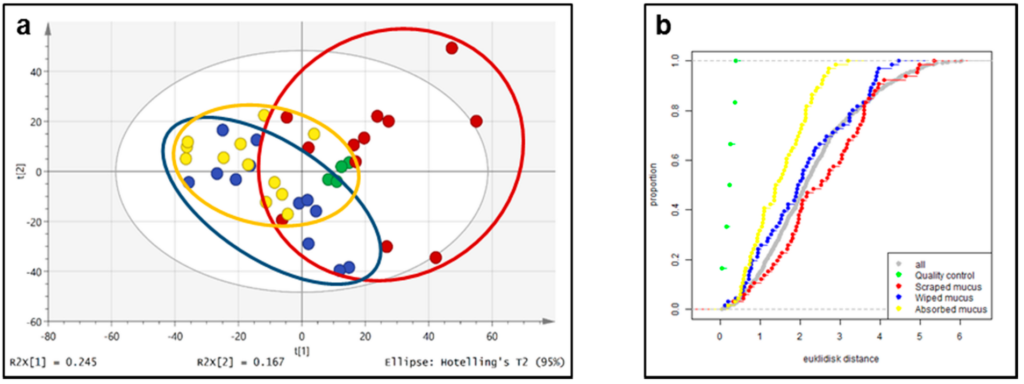Workflows for proteomic and metabolomics analyses of fish mucus
We have recently established workflows for the proteomic and metabolomic profiling of skin mucus in Atlantic salmon (Salmo salar). The epidermal mucus layer protects fish against harmful environmental factors and is an effective barrier between the fish and the biosphere. Since excreted proteins and small metabolites can mirror the health status of the fish, it is a valuable matrix for monitoring stress, pathogen exposure, and nutritional effects. We sampled skin mucus from farmed Atlantic salmon using three different methods including absorption or wiping with tissue paper, and scraping with a blunt blade. The mucus metabolome and proteome was analysed by ultra-high performance liquid chromatography coupled to high-resolution mass spectrometry.

The results showed that the three types of skin mucus samples differed qualitatively and quantitatively for both the metabolomic and proteomic profiles. The targeted analysis of 86 small metabolites showed the presence of up to 60 in absorbed mucus. Untargeted analysis of the mucus samples from equally treated salmon revealed that the total variation of the metabolome was lowest in absorbed mucus and highest in the scraped mucus. The absorbed mucus was also the least tainted by proteins from damage inflicted to the fish epidermis by the sampling procedure. Wiped mucus showed a better protein yield than absorbed and delivered a larger proteome of identifiable proteins, with less contamination from epithelial proteins than observed for scraped mucus.
These results were obtained as part of the project PromoFish that received direct funding from the Norwegian Veterinary Institute. We are currently expanding our approaches and technologies to other types of mucus, e.g. gill mucus, and in several projects on fish health and biomarker discovery.